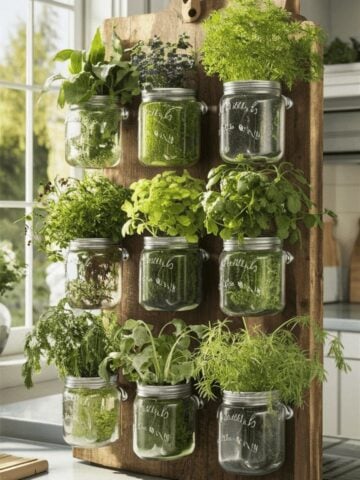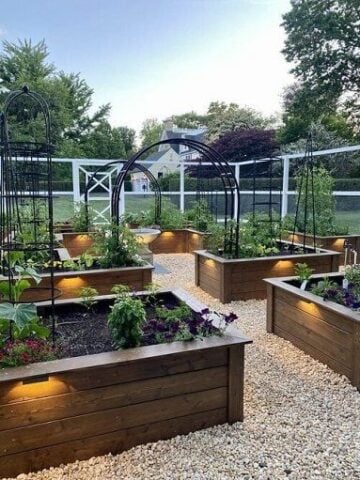Transform your gardening with our essential guide on fixing, upgrading, and maintaining your garden tools. Discover simple tips to make your equipment work for you, ensuring a more efficient, enjoyable gardening experience. Say goodbye to frustration and hello to thriving gardens with our expert advice.
Disclaimer: this post may contain affiliate links, and every purchase made through these links will give me a small commission (at absolutely no extra cost for you!) AS AN AMAZON ASSOCIATE AND REWARDSTYLE MEMBER, I EARN FROM QUALIFYING PURCHASES. See Privacy Policy for additional info.
Do you feel like your gardening efforts aren't paying off as much as they should? You put in the hours, but instead of a thriving garden, you're left dealing with frustration—and maybe even sore muscles. The truth is, your tools might be working against you instead of with you.
Imagine this: dull blades tearing at plants instead of cleanly cutting them, rusty tools slowing you down, or outdated equipment making every task feel like a chore. Sound familiar? The good news is you don't need to settle for this.
In this post, we'll uncover the common culprits behind underperforming tools and show you how a few simple fixes can transform your gardening experience. It's time to let your tools work for you, not against you.
Common Problems With Garden Equipment
Gardening should be rewarding, not frustrating. Yet, many gardeners find themselves wrestling with tools that seem to work against them. Here are the top problems you might face:
- Dull or Damaged Tools: A dull pruner doesn't cut—it crushes. A rusty spade doesn't dig—it drags. Over time, wear and tear can turn even the most trusted tools into a source of frustration.
- Lack of Maintenance: Tools need care, too. Without regular cleaning and oiling, blades rust handles splinter, and mechanisms jam. Ignoring small issues can quickly lead to bigger problems.
- Outdated Equipment: Old tools might have sentimental value, but they often lack the efficiency of modern designs. Struggling with equipment that isn't built for today's tasks can drain your energy.
How to Fix Your Tools
It doesn't take a professional to bring your tools back to life. Here are some simple tips to help you get started:
● Replace Worn Parts
Sometimes, a small upgrade is all it takes to make your tools feel brand new. For example, ball bearings are key to keeping your devices running smoothly. High-quality options reduce friction, make movements easier, and help your equipment last longer.
Whether it's a lawnmower, wheelbarrow, or pruning shears, these small parts can make a big difference. Ultimately, these are an easy way to save effort and keep your tools in top shape for longer.
● Sharpen and Clean Regularly
Think about how effortlessly a sharp knife slices through a ripe tomato—that's exactly how your gardening tools should perform. Keeping pruners, shovels, and mower blades sharp ensures they work effectively and make tasks easier.
Additionally, cleaning off dirt and sap prevents rust and buildup. A simple wipe with oil after use can work wonders.
● Upgrade Wisely
When repair isn't enough, consider upgrading. Modern tools are crafted for comfort and efficiency, featuring ergonomic handles, lightweight materials, and innovative designs. These upgrades can make gardening easier and more enjoyable, giving you tools that work as hard as you do.
Keeping Your Tools in Top Shape
Prevention is always better than cure. Once you've fixed or upgraded your equipment, keep it that way with these simple habits:
● Learn Basic Repairs
Many common issues can be fixed at home. A quick YouTube tutorial can teach you how to sharpen blades or replace a broken handle. Knowing how to do simple repairs can save money and keep your tools in action longer.
● Store Them Properly
Leaving tools outside is an open invitation for rust and damage. Instead, store them in a dry, safe spot—like a shed or a toolbox. Hanging tools on a rack can keep them organized and off the ground.
● Create a Maintenance Routine
Dedicate a few minutes each month to inspecting your tools. Tighten any loose screws, clean blades, and check for signs of wear. It's much easier to address small issues before they turn into major headaches.
Bonus Tips for Better Gardening
A great garden starts with great tools, but there's always room for a little extra magic:
- Try ergonomic designs: Tools with comfortable grips and lightweight materials reduce strain, letting you garden longer without tiring.
- Use time-saving gadgets: Look for innovations like self-watering systems or adjustable shears that make tasks easier.
- Go sustainable: Durable, eco-friendly tools not only help the planet but also last longer, making them a smart investment.
Concluding It Up!
Your garden deserves the best—and so do you. By taking care of your tools, upgrading when needed, and keeping them in top shape, you'll save time, energy, and frustration. Small changes can make a big difference, turning gardening into the joyful, peaceful activity it's meant to be.
So, don't let your equipment hold you back any longer. Pick up that rusty trowel or squeaky wheelbarrow and give it the attention it deserves. With the right tools, there's no limit to what your garden can achieve!











Leave a Reply